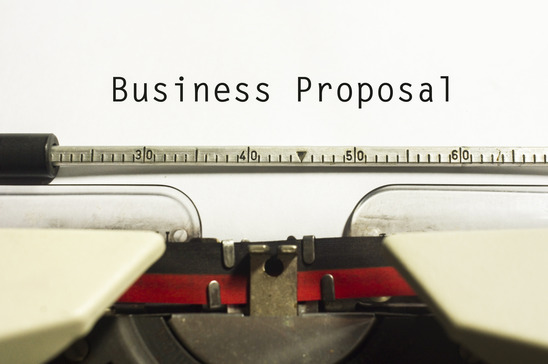How To Write A UX Design Proposal
 At some point in your UX design career, you may find yourself in an independent consulting role. When this happens, unless you are working through a staffing agency you’ll need to know how to land the business that pays the bills. In this post I’ll share my process of creating a UX Design proposal and show you a template you can use for future projects.
At some point in your UX design career, you may find yourself in an independent consulting role. When this happens, unless you are working through a staffing agency you’ll need to know how to land the business that pays the bills. In this post I’ll share my process of creating a UX Design proposal and show you a template you can use for future projects.
The Initial Meeting
When someone first contacts you about a potential UX Design project, it’s always best to have a face-to-face or Zoom meeting if possible before you submit a proposal. You can also meet over the phone. The purpose of this meeting is to get acquainted and give both parties (you and your prospective client) a chance to see if there is a mutual fit.
First, find out as much as you can about your potential client. Google them, look on LinkedIn, and see if you can identify anything you might have in common. Do your research, prepare a list of questions and be ready to do more listening than talking.
During the meeting, the first thing you want to find out is your prospect’s biggest challenge. What led them to contact you? What are they struggling with? Why do they want to do the project? How big is it and when does it need to be completed? Try to also determine how many other people will be involved, their work styles, and general availability.
Don’t Talk Price Yet
The first meeting is not a place to discuss price. Before you can name a figure, you need to fully understand as much as you can about the proposed project, what value you can add to it, and what it will take to successfully complete. If the prospect insists on getting a price at this early stage, that’s probably a red flag.
Do your best to politely help them understand that every project is different, and it is in their best interest to first define the project as clearly as possible so you can deliver maximum value for a fair and honest fee.
Set Expectations
It’s critical to set all expectations up front. For example, will you be expected to work on site? Can you work remotely? How often will you be needed for meetings? Does the prospect understand your process? Do you understand theirs? Does your prospect understand and agree with your suggested approach and deliverables? How will milestones be measured? What will the approval process look like? And, once you agree on a price, how will payment be made?
All of this fact-finding will help you decide up front if the prospect will be a good client or not. It’s kind of like dating. For example, if the person is late or constantly distracted during your time together, it’s highly likely they will continue that same behavior throughout the project. That’s another red flag signaling that this may be a problem client. You want to work with someone who respects your time and contributions to the project.
Other potential red flags include statements like “this shouldn’t take long”, or “if you can do this first one for free, we’ll have more work for you later”. If you hear anything like this during your first meeting, run the other way fast.
Verbal Agreements
The good news is that 99% of the time prospective clients are honest, hard working people who need help. More specifically, they need you and your expertise to help them with a specific problem.
With that in mind, your goal for the initial meeting is to come away with enough information to draft a proposal your prospect will love. So listen carefully, ask lots of questions, and take careful notes. Assuming you and your soon-to-be client have a verbal agreement at the end of your initial meeting, you’re ready to write a winning proposal.
Proposal Document and Structure
A good UX Design Proposal should have 6 key sections:
- Project Overview
- Project Approach (how you will do the work)
- Timeline
- Cost
- Assumptions
- Appendix (more information about you and your capabilities)
1. Project Overview
The Project Overview section introduces the proposal and why the project is needed. It lists the goals and objectives of the project and how success will be measured. It also demonstrates to the client that you heard them and understand what they want to achieve.
2. Project Approach
This section is the longest part of the document. It describes in detail how you will actually do the work. Each UX Design project is different, so some projects will be bigger or smaller than others. It’s good to list and describe all the deliverables you will provide, such as user research, stakeholder interviews, persona development, competitive analysis, site maps, wireframes, prototypes and user testing. For large projects, it’s good to divide them into phases. This makes them easier to estimate and provide realistic schedules.
3. Timeline
Your client will expect a schedule of when the project will be completed. As you get more experience, you’ll get a better idea of how long a UX project takes to deliver from start to finish. Like I said, they’re all different, so it’s hard to know exactly how long a given activity will take. I usually provide a range based on assumptions.
4. Cost
This is the biggie. The stake in the ground that says what you need to be paid. Don’t be afraid to quote a realistic fee. Remember that in addition to your time, you also need to be paid for your experience and expertise. You’re providing a lot of value that’s hard to find. You also need to be compensated for managing the project, so include that in your quote (at least 20% of your total estimated hours).
5. Assumptions
Make sure to document all of your assumptions within the proposal and review them with your client. This will give you room to adjust parts of the proposal later if necessary. For example, if you base the timeline on the assumption that clients will be available every Friday for reviews and they aren’t, it shouldn’t be a problem if the schedule slips.
6. Appendix
An Appendix is useful to share more information about you and your capabilities, and/or provide the client with samples of what the project deliverables will look like.
From Proposal To Contract
Whew, that was a lot! Now it’s time to present your proposal to your prospect. Yes, you heard that right. It is always far better to present your proposal in person instead of emailing it. That way you can handle any objections immediately and adjust your proposal as needed. It’s a win/win for you and your client.
I used to “just” email proposals and then get stuck in a waiting/follow-up game. Since I started presenting my proposals in person I close a lot more business. Assuming your prospect approves your proposal, congratulations! It’s time to seal the deal and ask them to sign a formal contract, which I’ll cover in another post.
Get My UX Proposal Template
A sample UX Design proposal document is available below. Download it and use it for your own projects. What do you think? Do you agree with this approach to landing UX Design consulting engagements? What have you done differently? Please share your thoughts in the comments. As always, thanks for reading!
UX Proposal Template $9.99